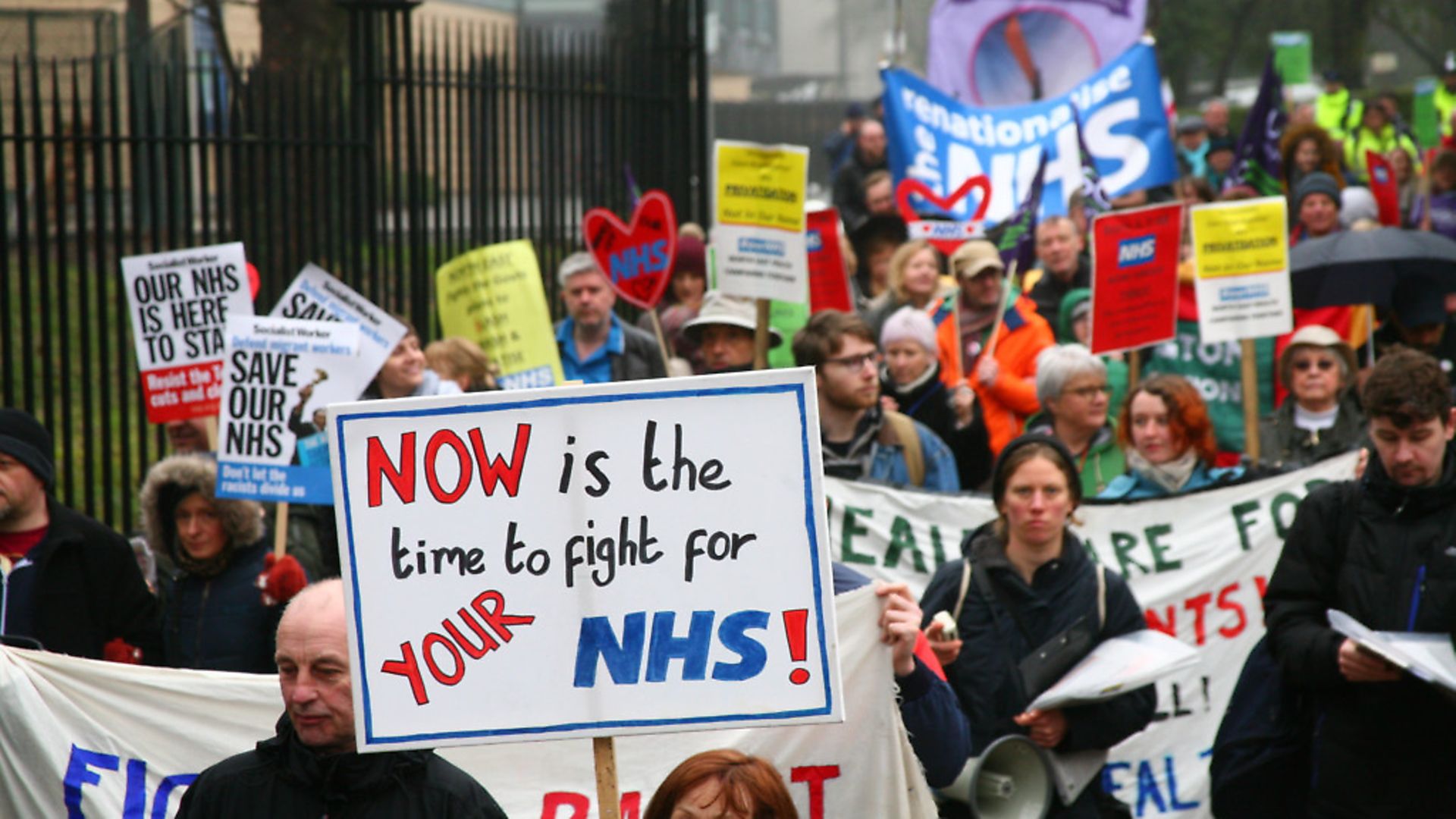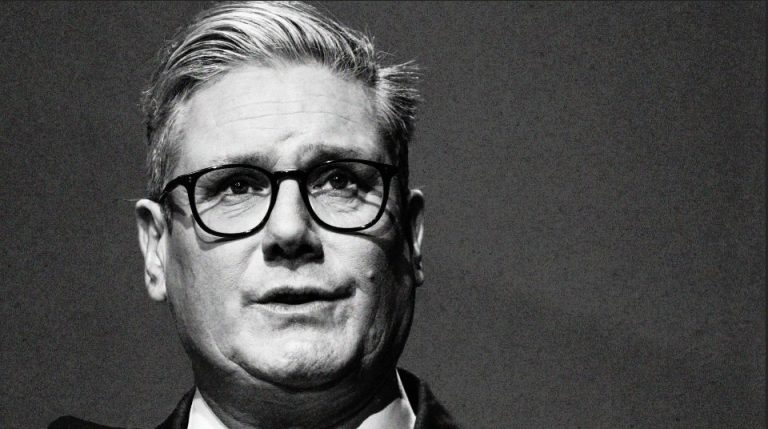
In the second part of an exclusive serialisation of his book How Britain Really Works broadcaster and journalist STIG ABELL focuses on the NHS.
The scale of the NHS
The NHS is both a simple, fetishised ideal, and a complicated, borderline inexplicable bureaucracy.
Its size – its comprehensiveness – is of course both its strength and its fatal weakness. When Nye Bevan said ‘administration is going to be the chief headache for years to come’, he was absolutely right.
The NHS is now the fifth largest employer in the world, with a staff population the size of Botswana. Statistics are overwhelming so I shall try to cherry-pick a few to give you the sense of the job done by the NHS. It deals with more than a million patients every 36 hours; 23 million people attend Accident and Emergency departments every year. There were 3.1 million emergency 999 responses in 2015; 1.9 million people were in contact with mental health services in the same year. At the end of September 2016 there were 3.7 million people on waiting lists. The NHS employs 149,000 doctors, 340,000 nurses, 25,000 midwives, 19,000 ambulance staff and 31,000 managers.
Taking staff all in all, it employs just under 1.5 million people (more than 10 times as many as the next largest employer, the army). And this is just England. Remember – if you consume London-based media – it is the English NHS that is generally being described, although it is fair to say that the principles and indeed the processes are fairly universal across the United Kingdom.
The cost of the NHS
We have a sense of the vastness of the institution, so let’s examine the spending on it, which is perhaps its most commonly discussed aspect. Bare figure first: the expenditure of the NHS in 2016 was around £120 billion. Is that enough? The answer – as we shall see – is almost certainly no.
Another way of considering spending is as a proportion of GDP. Historically, this percentage has been fairly low: around 4% in the 1950s, 1960s and 1970s, going up to 5% in the 1980s.
When Labour supercharged the spending under Tony Blair and Gordon Brown it got to around 8% in 2009, not coincidentally a time of much improved performance for the institution. It has been waning ever since, and is likely to continue to do so, probably dropping to around 6% by 2020. The UK GDP is forecast to increase by around 15% by 2021; our spending on the NHS by only 5%. In Britain, we spend less on healthcare than most other civilised countries: we rank 13th out of the 15 countries that originally made up the EU; we spend less than the EU average now as a whole. To match the average of EU spending, the NHS budget would have to be increased to £185 billion.
This is important to bear in mind when you listen to government platitudes on the subject of NHS spending. Yes, the NHS budget is ring-fenced and not subject to cuts; yes, spending has increased in cash terms every year. But it is also clear that we spend less than most other countries, spending is not growing in line either with our economic performance (ie, the amount of money available to the government) or in line with the increased demand of an expanding, sickly population.
In 2016 the government published its Five Year Forward View, which revealed a £30 billion black hole between its spending and its allocated budget. So the NHS, as currently constituted, will cost more than the government is willing to pay. The report says: ‘It is implausible to think that over this period NHS spending growth could return to the 6%–7% real annual increases seen in the first decade of this century.’ Translation: we are not returning to the Blair years. It is worth pondering that a little: Labour took a decision to channel more money into the NHS to make it better. The current government is not willing to do this, pleading austerity and belt-tightening. It believes that there is no more money left to give, which depends on what your priorities in government are. This begs another question, then: if the current system is over budget and out of money, should we look at other ways to provide healthcare to the nation?
Other models of healthcare
It is, of course, a heretical subject. The core principle of the NHS is that the cost is shared by everyone, paid for out of general taxation. The upside of this is that the rich are compelled to support the poor in a communal effort; the essential inequality of human society is removed from the equation. That is why Nye Bevan called it ‘the biggest single experiment in social service the world has ever seen’. The downside is that everybody takes the NHS for granted: it sits there, automatically funded in the background, without anybody thinking too much about it.
One new approach might be to keep the overall model, but clarify the funding. You may have heard the notion of a hypothecated tax, which simply means one ring-fenced for a specific purpose (in this case the NHS). National Insurance used to be a hypothecated tax, designed to provide a safety net in the event of illness, unemployment and retirement.
Now that is forgotten and it is just an adjunct of income tax (it accounts for about a fifth of tax revenue collected). A solution would be to convert NI contributions into a hypothecated tax earmarked for funding the NHS and social care. Alternatively, a specific part of income tax could be used to perform the same task. In October 2016 research by the broadcaster ITV suggested that 70% of people would happily pay an extra penny in the pound if it was guaranteed to go to the NHS.
This is heartening, in a sense.
And a hypothecated tax would have the effect of making people value how their money is being spent more: we might be less likely to miss hospital appointments, more likely to appreciate our GP, if we feel we have paid extra for them. It may not be enough, though, to deal with the issue of our ever-increasing requirements for healthcare. It is unlikely that people would consent to a spiralling tax system designed always to match demand.
Perhaps we should consider the first principle and question whether general taxation is the right approach. Have you ever considered that the world is full of progressive, successful countries, not all of which (indeed not many of which) have a national health service? Well, consider it now, as we look briefly at how everybody else does it.
Healthcare models in other countries
Essentially, most other parts of the world follow a system that is – to a lesser or greater extent – a combination of health insurance and backstop state support. In France and Germany social insurance is paid by a combination of employer and employee, with the government handling the unemployed.
In France 85% top up the healthcare package with voluntary extra insurance; in Germany only 16% do.
In Switzerland there is no employer contribution, but everyone has to contribute to their own health insurance. The government subsidises 75% of hospital provision, and a third of the population buy top-up insurance. In Holland there is greater collaboration between individual and state: a central tax funds long-term or catastrophic care; compulsory individual health insurance funds acute treatment; and people can opt out for private insurance or purchase add-on individual insurance for things like dentistry.
Outside Europe, Australia has a hypothecated tax that funds a Medicare system, but almost half of Australians have top-up private insurance (incentivised by tax breaks). In America everything is based on private health insurance, largely paid by employers. The now defunct Obamacare improvements were designed to make coverage more affordable, make companies better with their coverage and make insurance companies less mercenary and venal. As a backstop, US Medicaid purportedly supports those without health insurance and – in absolute terms – constitutes a larger free health system than the NHS.
The European examples are the most telling. What is striking is the belief that a combination of health insurance and some (lesser) state support is very common. And effective. The idea is that those who are earning pay directly for their own care, and the state supports only those who need it. Those with money buy private health insurance far more readily than in the UK, which in return lessens the burden on shared services. In the UK, about 12% of people have private health insurance: theoretically that could be increased relatively easily.
Now campaigners will (correctly) tell you that the joy of the NHS is its democratisation of risk and payment for all citizens; it is fair: a banker is treated the same as a butcher. But compulsory health insurance is fair too, provided that those without the ability to pay for it are also looked after. As in Holland, say, or Germany. One question follows: well, how does the performance of the NHS compare with these other places? Glad you asked.
Healthcare performances in other countries
As we saw from our economics chapter, wherever there are metrics, there are arguments. Not everyone agrees about how best to measure healthcare performance.
But, if we look at doctor numbers per 1,000 people we see that Australia has 3.3, Germany has 3.9, the Netherlands has 3.2, France has 3.1 and the United Kingdom has 2.8. If we look at hospital beds per 1,000 people we see: Australia 3.8; Germany 8.3; the Netherlands 4.7; France 6.4; and the UK 2.9. The UK comes 27th out of the 35 OECD16 countries by this metric.
In terms of spending as a percentage of GDP: Australia 9.4%; Germany 11.3%; the Netherlands 10.9%; France 11.5%.
As we know, the UK peaked at around 9% (when you count private and NHS together) and is now declining away from the average.
So, broadly, with our NHS, we spend less on care, with fewer beds tended by fewer doctors than many other rich countries in the world. When it comes to cancer treatment, while things have improved over the years in absolute terms, we still do not compare well with other countries. According to OECD data, the UK ranks 20th out of 23 countries in bowel care five-year survival rates; generally speaking we are – according to the European Journal of Cancer* – the worst country in Western Europe for all cancer survival. In 2010 the OECD said that ‘the quantity and quality of UK healthcare services remain lower than the OECD average’.
In 2016 the Euro Health Consumer Index judged the UK to have the 15th best health system in Europe, saying that ‘the NHS urgently needs further reform if it is to match the services offered by Western Europe’s leading health systems’.
There is one outlier analysis, which you may have heard something about. In 2014 a Washington-based organisation called the Commonwealth Fund did extensive comparative research about healthcare systems using data from patients, doctors and the World Health Organisation. The UK came top out of 11 countries, doing well in terms of quality, access and efficiency. This is despite the fund judging the UK to come tenth in its ‘healthy lives’ score, which measures infant mortality rates and cases in which patients would have survived had they received timely intervention. Call me a cynical so-and-so, but I would say that ‘keeping people alive’ should count as a more significant metric than this in an overall examination of a health service.
Taken together, such measurements are probably a fair portrayal of the NHS’s performance: even when it does well, there is a suspicion that it is doing badly. Indeed, its central quality remains the fact that it is free for everybody. The expectation isn’t that it will perform well; the surprise is that it performs at all.
And the situation is getting ever bleaker, not simply due to underfunding, but because of ever increasing demand. Any consideration of the NHS needs to become a consideration of the health of the nation: the NHS is not necessarily failing us; we are persisting in failing it.
Health of the nation
Let us begin by noting this miscalculation by William Beveridge: he predicted that ‘there will be some development of the service, and as consequence of this development a reduction of the number of cases requiring it’; in other words, demand on the NHS would shrink over time. This was plausible, I suppose. Beveridge saw around him a nation hugely disadvantaged in terms of treatments and care, and was entitled to think that a democratised, fully-functioning service would bring health and well-being to a deprived populace.
Instead, of course, it has brought longer lives, and more survivable chronic ailments. Enoch Powell spotted this in 1966: ‘Every advance in medical science creates new needs that need not exist until the means of meeting them came into existence… there is virtually no limit to the amount of medical care an individual is capable of absorbing.’
We are unquestionably getting older as a nation, and – although there is some cautious talk of life expectancy levelling off or even slightly decreasing overall – we are collectively sticking around for more than was once considered natural. Life expectancy for a man in 2018 was around 79, for a woman 83. The number of over-85s is going to double to 3.6 million people in the next 20 years.
At present, two-thirds of people admitted to hospital are over 65; and more than a quarter of hospital inpatients have dementia. The nature of entropy within our bodies means that we can do little to combat the fact that, as we live longer, we will contract more ailments. A total of 70% of the NHS budget is spent on long-term health conditions, rather than one-off illnesses susceptible to a cure. But our age is not the true threat to the NHS: our lifestyle is.
So we may start with this proposition: the future of the NHS lies not in the hands of politicians and economists, but in our own.
When former banker Derek Wanless was asked to review funding in the NHS in 2002, his answer was that people needed to be more ‘fully engaged’ with their health. Because, in some ways, a dystopian version of Beveridge’s vision has actually occurred before our eyes: a fully-functioning, free health service has provided tacit encouragement for ill-health. If you know you are going to be treated whatever happens, you may take warnings about salt, or sugar, or booze or cigarettes less seriously; you may not bother to turn up to an appointment on time, or at all. As it stands, 40% of the NHS’s workload is related to ‘modifiable health risk factors’.
In other words, if we behaved ourselves, then the NHS budget could stand at £75 billion, and be both affordable and efficient. Here are a couple of obvious areas where we as a nation are killing both ourselves and the health service. Today, a majority of adults in this country are overweight or obese; by 2035 the figure could be as high as 75% of every grown-up in Britain. We spend our time sitting on our bottoms or lying on our backs, eating pre-prepared pap from a packet. Of course, the problems start early: 9% of children are obese by the age of five. And not only is obesity unhealthy and unattractive, it is incredibly costly to the economy and to the NHS. One accounting method says that obesity costs the overall country £47 billion a year, more than armed violence, war and terrorism. We know that it costs the NHS £16 billion every year, of which £10 billion is the cost of treating diabetes.
Add in smoking, which costs the NHS between £3 billion and £6 billion a year, and boozing, which costs £3.5 billion a year, and you can see the scale of the problem, and the theoretical possibility of a solution if we only acted more responsibly.








